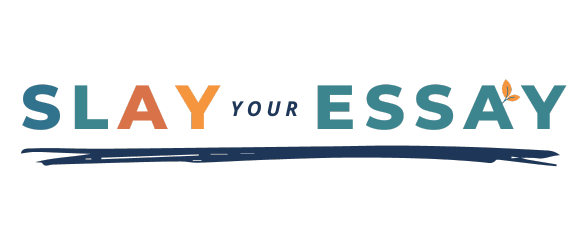Early Decision vs. Early Action: What You Need to Know
Applying to college and feeling confused about whether to apply early decision vs. early action? It’s understandable, and you’re not alone.
I mean, couldn’t the college “gurus” think of a better way to distinguish these two options? College applications are overwhelming enough, but now you have to also choose when to apply and not mess up the subtle difference?
Thankfully, it’s not as complicated as it sounds. But you do want to make sure you think through your choices carefully.
Keep reading to learn more about the differences between early decision and early action. You’ll also better understand the pros and cons of each choice so you can make the best decision for your application journey.
What is Early Decision? The Basics
Early Decision (ED) is a binding college application option. ED requires students to submit their application by an earlier deadline. These deadlines usually fall around November 1 or November 15.
If you apply early decision, you receive an admission decision much earlier. You could hear back even as soon as mid-December. But the catch to this route is that early decision is a binding commitment. This means that if you are accepted through ED, you are obligated to go to that school. And you will have to withdraw your other college applications.
You are also only able to apply early decision to one school. So you will want to make sure you’ve thought through your prospective schools carefully. Use your top choice college as the one you use for early decision.
But keep in mind that you are not required to apply early decision to any school. So don’t feel like you have to apply to a school early decision if you’re not ready.

Pros of Applying Early Decision
Here are some of the upsides to applying early decision:
Higher Acceptance Rates
Many colleges have a higher acceptance rate for applicants who apply early decision. This is simply because schools want to admit students who have demonstrated a strong desire to attend their institution.
Early Peace of Mind
When you apply early decision, you could get accepted into your dream school before winter break. This saves you from waiting around for multiple acceptance letters.
Reduced Stress
If you get accepted to your ED school, you don’t have to obsess over making a decision. The decision is already made! You can be done with the whole admission process early and focus more on enjoying your senior year.
Cons of Applying Early Decision
Binding Commitment
The biggest downside is that ED is “binding.” Remember, this means you will have to withdraw all other college applications if accepted through ED. If you have a change of heart, this limits your options.
Limited Financial Aid Negotiation
Applying early decision may not be a good choice if financial aid is a key factor for your admission options. This is because you will have to withdraw your other applications before you would see what type of aid they would be able to offer you.
Feeling Rushed
If you apply ED, you may feel rushed to get all of your application materials together too quickly. This could force you to submit so-so work when it comes to essays and other application materials. A suboptimal application could harm your chances of acceptance.
The Basics of Early Action (EA)
Early Action (EA) is that it is not binding. You will still be applying at an early deadline (usually some time in November). But if you get accepted, you don’t have the obligation of attending that school.
EA gives you the freedom to consider offers from other schools. This means you can compare financial aid packages from different colleges before you make a final decision.

Pros of Applying Early Action
Non-Binding
Early Action allows you to consider multiple options. This means you can apply to several schools with EA and get a better picture of financial aid packages and offers before committing.
Early Notifications
Similarly to ED,, Early Action will result in you hearing a decision from colleges sooner. This may bring you peace of mind and avoid the extra stress of a prolonged admission process.
Financial Aid Comparisons
Again, EA gives you the ability to compare financial aid options from different colleges. In the long run, this could make college more affordable for you.
Cons of Applying Early Action
Competition
Many colleges that offer Early Action are highly selective. This means you will still need to put together a strong application with insightful supplemental materials to stand out.
Less Favorable Acceptance Rates
For the most part, acceptance rates for Early Action are still higher than they are for regular decision. But they are usually lower than Early Decision acceptance rates.
Summary of Key Differences
Hopefully by now, you get the gist of what both Early Decision and Early Action are. Let’s just go over a quick recap of the key difference between the two:
- Binding vs. Non-Binding: Early Decision is binding. Early Action is non-binding. With ED, you must commit to the college if accepted. With EA, you get to choose among your acceptance offers.
- Acceptance Rates: ED generally has the highest acceptance rate, followed by EA and then Regular Decision. If you’re confident about a particular school, ED might offer the best chance of acceptance.
- Timing: Both ED and EA provide early admissions decisions, typically before the end of the calendar year, offering a sense of relief and direction earlier in the application process.
- Financial Aid: Early Decision can be risky if you rely on financial aid to attend college. EA allows you to compare financial aid packages before making a commitment.
- Number of Applications: You can apply to as many schools as you want with EA. But you can only apply to one school with ED.
Is it better to apply early decision or early action?
Choosing between Early Decision vs. Early Action depends on a lot of factors. So of course, there is no one-size-fits-all answer.
To make the right choice for your college application, consider the following:
- Your Top Choice: If you have a clear top-choice school and are willing to commit to attending no matter what, Early Decision might be your best option.
- Financial Considerations: If you need financial aid to attend college, you might want to avoid Early Decision. Early Action allows you to compare financial aid packages, potentially making college more affordable.
- Application Strength: Evaluate the strength of your application and how it aligns with the schools you’re applying to. If you’re highly competitive, you might have an even better chance with Early Decision or Early Action.
- Flexibility: Consider how flexible you want to be with your college choice. If you’d like to compare offers and keep your options open, Early Action may be the better choice.
Final Thoughts on Early Decision vs. Early Action
- Choosing between Early Decision vs. Early Action can be tricky. It is vital that you understand each option and weigh the pros and cons of each carefully. But at the end of the day, what matters most is finding the college that’s the best fit for you and your future.
- Either way, you want to make sure that you choose the best option for you and have as strong of an application as possible. You can also decide to wait and just apply regular decision.
- Regardless of your choice, Slay Your Essay is here to help you ensure you have the strongest application materials as possible! Check out our Editing Services page for support with your main personal statement, supplemental essays, or scholarship essays.






